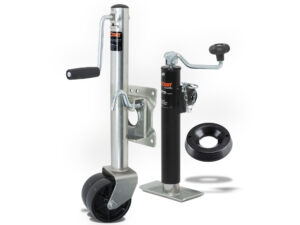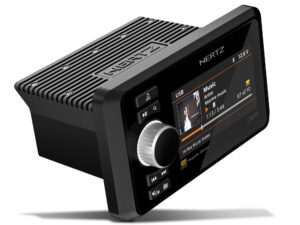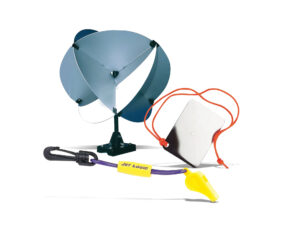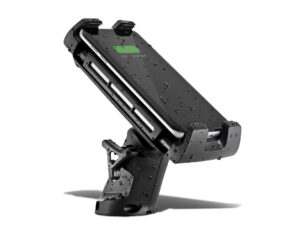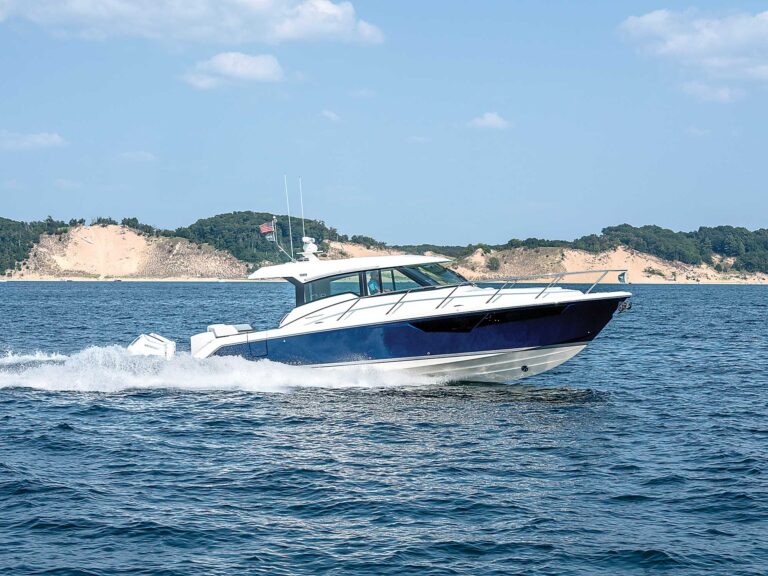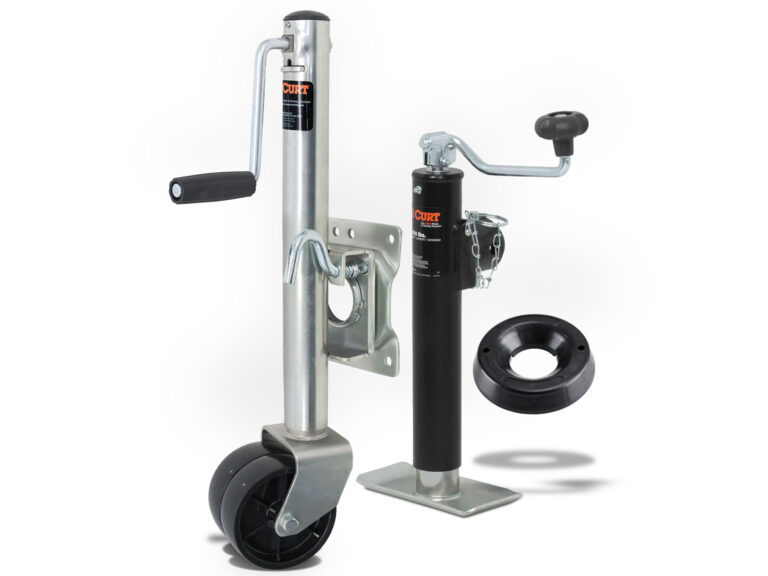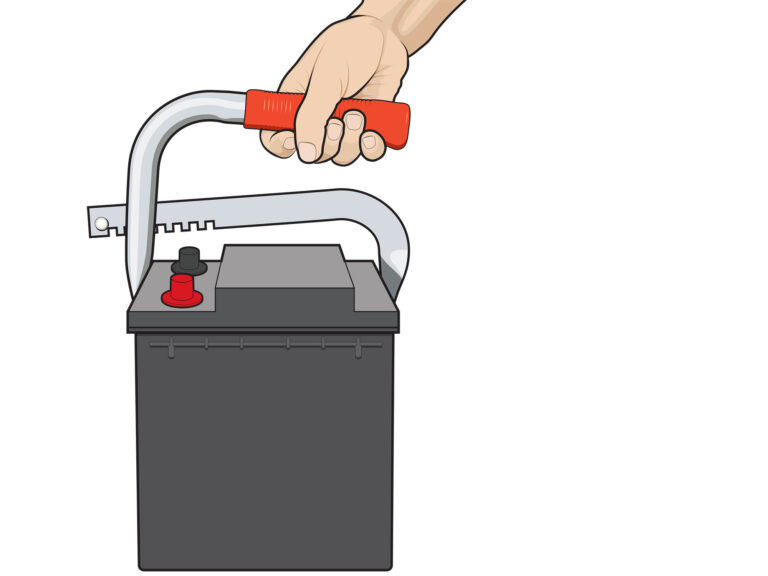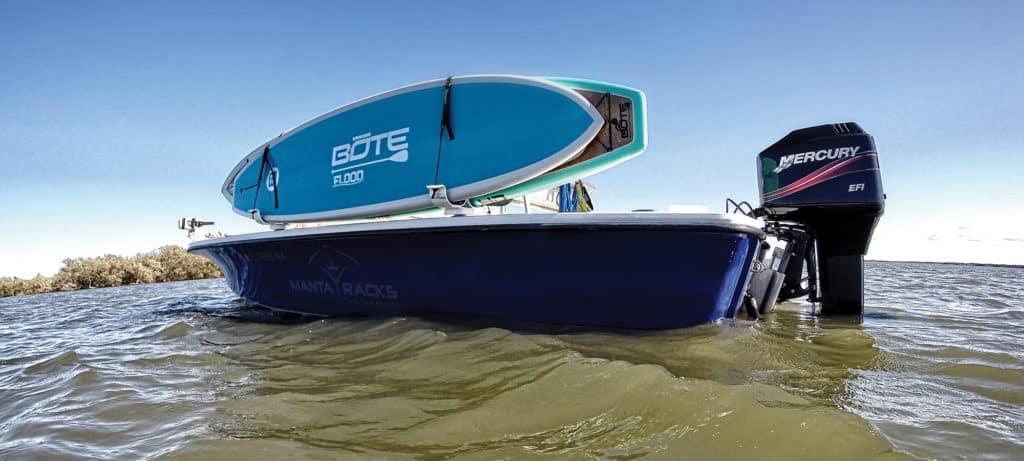
You need look no further than the local lake, bay or harbor to confirm the popularity of stand-up paddleboards and kayaks. In fact, on some days, human-powered craft are so numerous, they can pose a navigation challenge to traditional boaters.
But everyone has a right to enjoy the water in whichever way they desire, right? Why not do both? Maybe you want to raft up at the sandbar next weekend and break out the SUP to mingle with the crowd. Or you might cruise to a secluded bay, get out your board and enjoy some solitude. There are also some remote wilderness no-motor zones in the Florida Everglades and elsewhere that restrict entry to paddlecraft only. You can anchor outside and then paddle in. Really adventurous boaters take their paddlecraft to the Bahamas to fish the flats where bonefish and permit feed in mere inches of water.
That all sounds great, but carrying boards and ’yaks on a mothership can be a hassle. Where do you stow them? How do you secure them? If you decide to tie them to the bow or stuff them in the cockpit, eventually they’re going to get in the way. You can stack them on the swim platform, but many SUPs and kayaks are longer than the width of some boat transoms. The Bote Flood board, for instance, is 12 feet long. The Hobie Revolution 16 kayak is, well, 16 feet long. You also lose access to the swim platform when it’s packed with your toys.
It’s no longer awkward or cumbersome to bring paddlecraft aboard your boat thanks to creative ways to get into the board game. A number of systems let you easily and quickly stow and deploy SUPs and kayaks, as well as surfboards and kiteboards, from virtually any kind of boat. Here are six easy solutions.
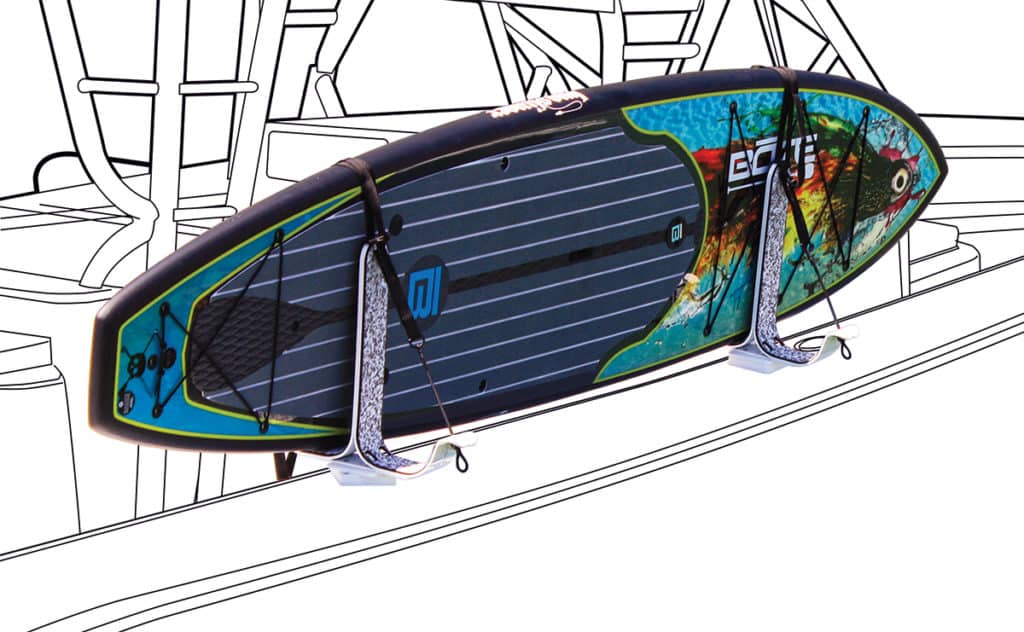
In the Hole
Stowing SUPs and kayaks along the gunwales preserves onboard mobility. But how do you secure these craft on the gunwale? Why not use racks designed to fit in the gunwale rod holders? One company that has capitalized on this is Manta Racks, based in Ocklawaha, Florida.
Manta focuses on the center console market with SUP and kayak racks equipped with gimbaled posts that fit into the holes of the gunwale rod holders. “The rod holders are already on the boat, so why not use them for racks to hold boards?” asks Tim Wilhelm, owner of Manta Racks.
This not only gets the boards out of the way, but also does so without the need to drill holes or install any special mounts on the boat, Wilhelm points out.
A patented 360-degree locking swivel base allows boaters to angle each arm of the rack on a horizontal plane to suit the boat and board. Bases are available for both 15- and 30-degree rod-holder tubes. Manta Racks are constructed from quarter-inch aluminum, then powder-coated to resist corrosion. All hardware is stainless steel. SeaDek foam on the inside of the arms cushions boards, and built-in cords secure the board or ’yak.
Manta’s S1 rack ($499.99, mantaracks.com) will transport one board, while the S2 rack ($799.99, mantaracks.com) will hold up to two SUPs. The LTK ($599.99) will stow one kayak or one of the bigger new SUPs such as the Dragonfly 13’6″ or the Live Watersports L2 board.
The Outracker system ($419.99, storeyourboard.com) also fits into gunwale rod holders, but it is restricted to tubes with 30-degree angles. However, the two padded aluminum arms pivot and lock in a horizontal plane to fit different SUPs.
The Outracker will accommodate up to two boards. The post that drops in the rod tube extends upward to serve as a rod holder, so you can still stow rods or troll for fish while also carrying boards or kayaks.
These systems can also be used with rod holders that extend across the transom of a boat, as well as along each side. At the 2017 Miami International Boat Show, we saw a new Mako 414 CC with a Manta LTK rack across the stern of the big center console fishing boat.
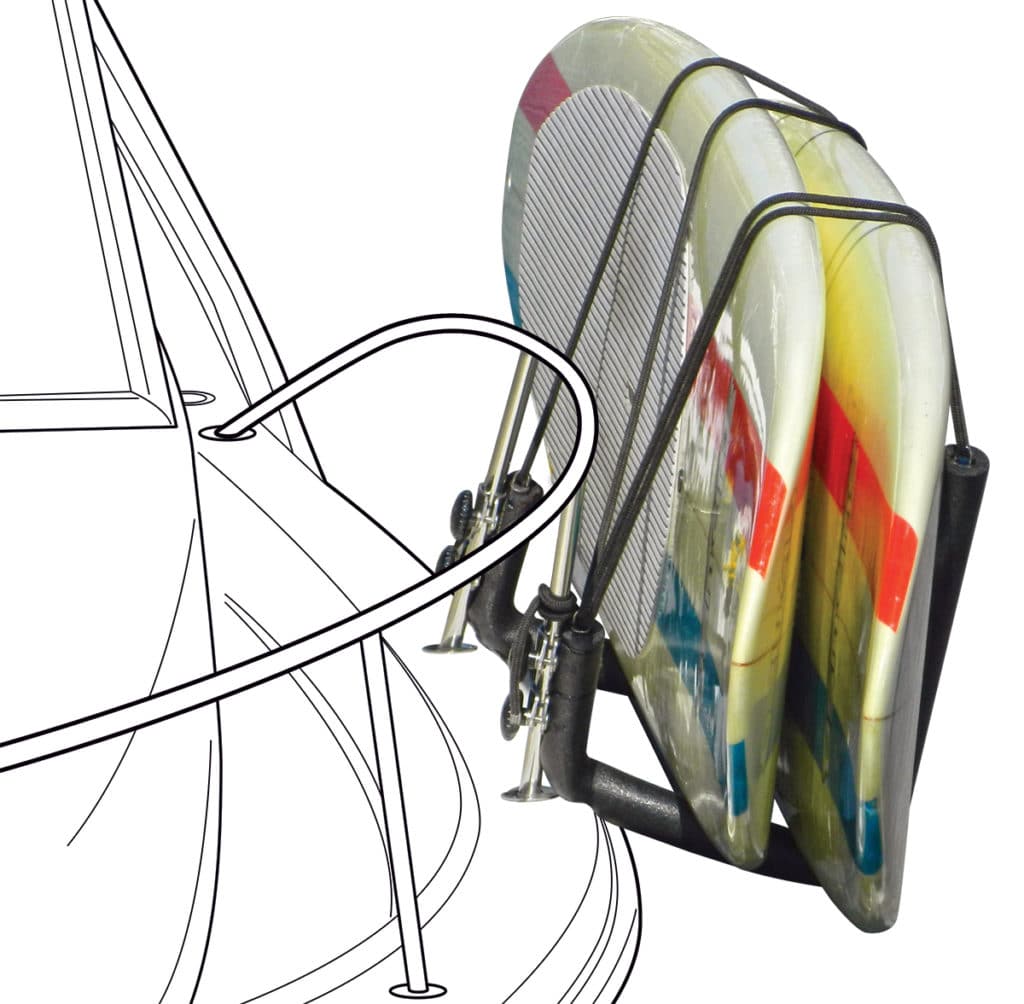
Rail Way
Most boaters won’t buy a new boat just to have dedicated stowage for boards (as described on page 90), though it’s a great feature to consider if you’re in the market. But if your current boat has a high-profile bow rail that extends aft to about midship, you can get a rack that lets you easily stow and deploy your SUPs and kayaks.
Magma Products, best known for its line of marine barbecues, offers the Removable Kayak/SUP Rack ($229.98, magmaproducts.com), which includes two arms that clamp to vertical or diagonal bow-rail stanchions ranging from 7/8 to 11/2 inches in diameter. Constructed from polished stainless steel with UV-resistant padding to protect your paddlecraft while cradled in the 1-inch-diameter arms, each rack will hold two SUPs or one kayak. Tie-down points on each arm let you secure boards and ‘yaks with straps.
Magma’s exclusive quick-release knob system allows each arm to be instantly removed or rotated inward when not in use, or swung in tighter to the bow rail to fit smaller/narrower kayaks or boards.
The SurfStow Suprax ($249.99, storeyourboat.com) is another example of a system that clamps to a bow rail. Constructed from aluminum, the rack arms will hold one SUP and have EVA foam linings to protect your board. A built-in bungee cord secures the board. The universal clamp system swivels to attach to virtually any vertical or horizontal rail ranging from 7/8 to 11/4 inches in diameter. There’s also an add-on accessory arm that increases the capacity to a pair of SUPs ($99, westmarine.com).
SurfStow also offers the Yakrax ($299.99, overtons.com) rack for kayaks. It uses the same clamp system as the Suprax, but the padded aluminum arms accept the hull depth of a kayak.
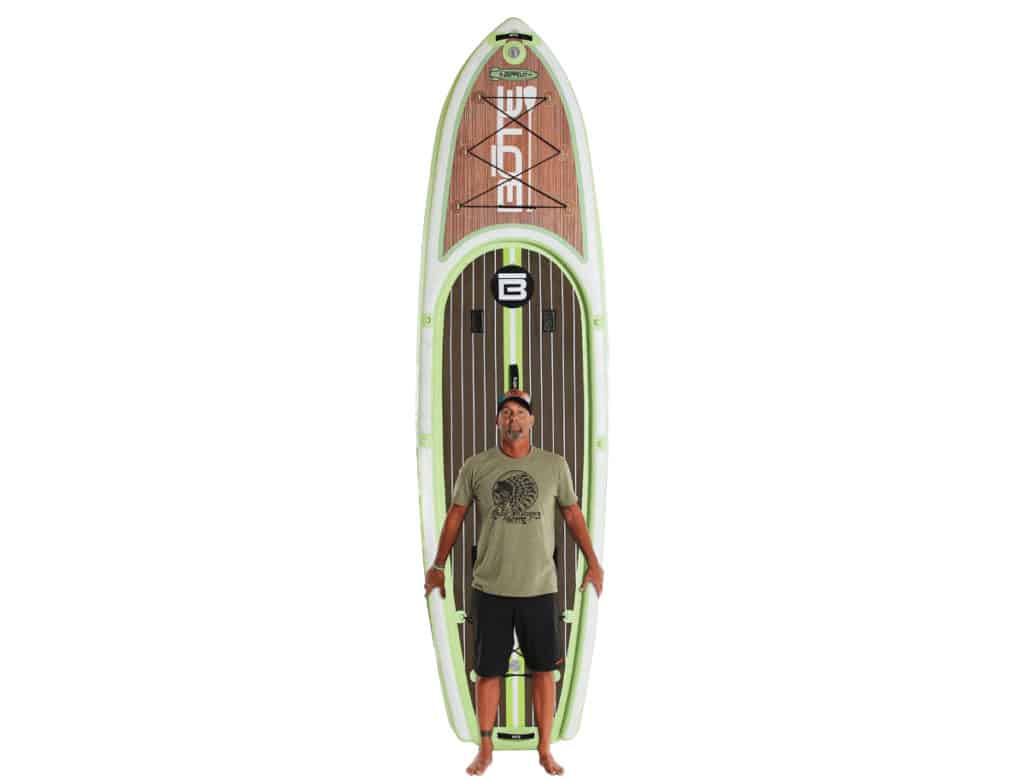
Blow-Up SUPs
Cruisers have been using blow-up boats — aka inflatable boats — as tenders for years. That lesson seems to have taken hold when it comes to the makers of SUPs.
The ability to inflate and deflate a board translates to greater portability. It also means you might be able to carry a much larger board than your small boat could otherwise accept, even with a rack.
Take, for example, the Zeppelin ($1,599, boteboard.com). This big, stable 12-foot-4-inch inflatable SUP from Bote is more than 3 feet wide and can carry two adults. Yet when drained of air, it folds down into a 45-pound backpack that can stow in a cabin, fish locker or lazarette. The Zeppelin comes with a pump and a removable skeg.
Another big blow-up paddleboard is the Body Glove Performer 11 ISUP ($899.99, bodyglove.com). It folds into a backpack that weighs just 24 pounds for easy onboard stowage. At 11 feet long and 34 inches wide, the ISUP is stable and glides easily through the water. It features three rubberized fins, a three-piece aluminum paddle and a manual pump. Check out our review at boatingmag.com/body-glove-isup.
Other inflatable SUPs include the 10-foot Starboard Astro Whopper Zen ($999, coloradokayak.com), 10-foot Red Paddle ($999, airkayaks.com), and the 14-foot Naish Glide ($1,552.50, californiakiteboarding.com).
To make the inflation process less strenuous, consider a portable electric air pump such as the West Marine 12-volt inflater ($14.77, westmarine.com).
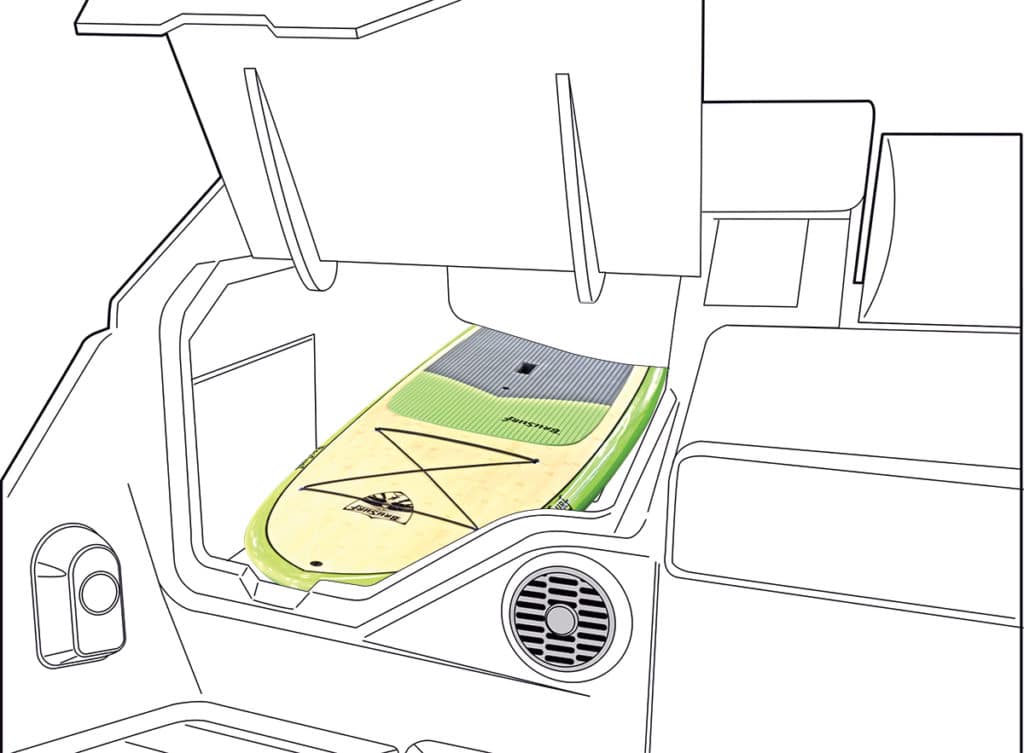
Board Room
The popularity of SUPs has grown so much that Sea Ray’s new, uniquely designed SLX 400 (aka the Entertainer) features a dedicated locker with an upward-opening hatch for these paddlecraft.
This “garage” lets you keep boards on the boat all the time so you don’t have to drag them up and down the dock when you want to take them on a cruise. And they never get in the way because they’re tucked in their own board room.
Accessible from the aft swim platform of the SLX 400, the locker holds two SUPs that easily slide out and onto the platform, and then quickly slide back in.
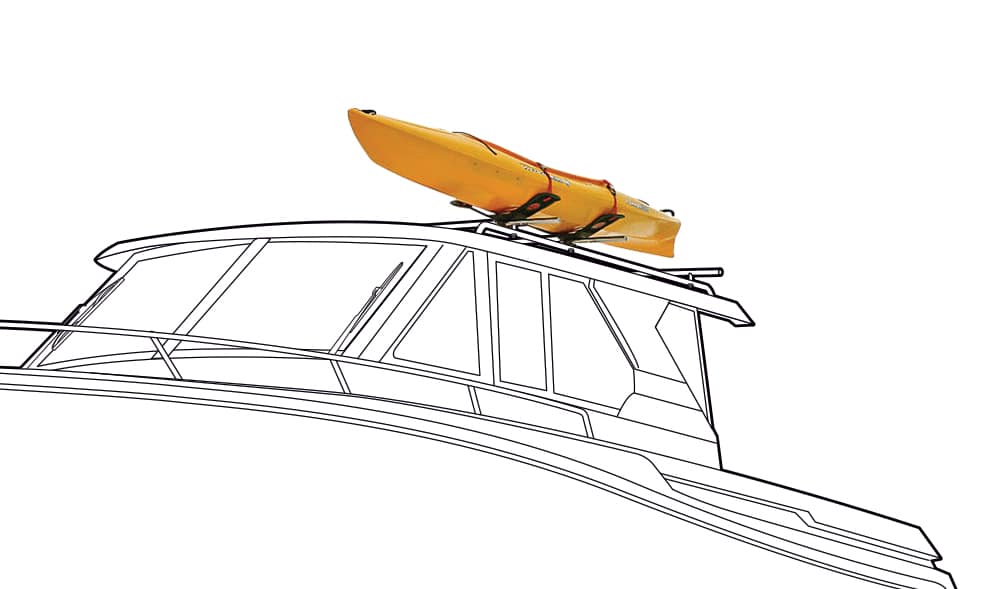
Top Idea
The proliferation of hardtops aboard today’s boats has a benefit besides shade and shelter. Hardtops create new surfaces for attaching accessories such as racks for SUPs and kayaks, akin to roof racks on automobiles.
At Largo, Florida-based Intrepid Powerboats, for example, models such as the 400 Cuddy are often built with custom-ordered hardtop racks for SUPs and surfboards, says Joe Brenna, vice president of customer service. “Racks are installed as part of the build, as per the buyer’s specifications,” Brenna says.
It’s one thing to customize a boat to carry boards, it’s quite another to offer a model designed for SUPs and kayaks. Yet that’s what the Tiara Q44 is all about. Tiara calls it the Adventure Yacht. The Q44 is available with a hardtop toy-storage system that lets owners secure boards and kayaks on a top-mounted rack. The hardtop was designed to prevent marine accessories such as VHF antennas from interfering with board stowage. The walkaround layout of the Q44 facilitates loading and unloading paddlecraft from the rack.
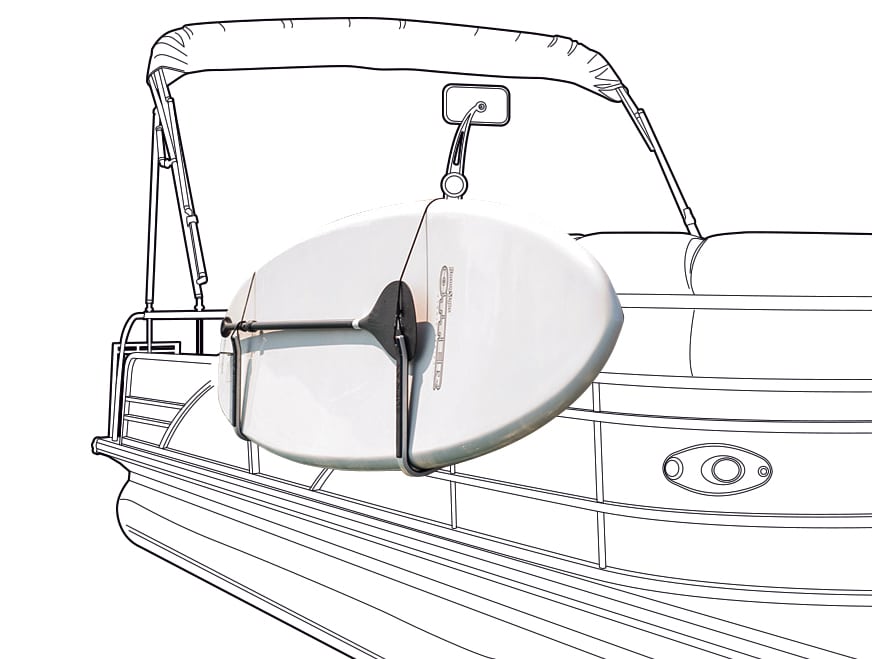
‘Toon Tote
Many pontoon boat owners love to take their toys with them, including SUPs and kayaks. What better way to enjoy a summer day on the water than to anchor up in a quiet cove and get in some paddle time? Or maybe you want anchor out and explore or fish a remote creek that’s too narrow or shallow for your pontoon boat.
While big pontoon models offer lots of space to carry boards, why not clear the deck and the seats with racks designed to fit the square railings of the panels that surround the interior? Enter the Toon Racker ($369.99, storeyourboard.com).
A pair of J-shaped arms fit the railings of most pontoon boats, and each rack will accommodate one kayak or two SUPs. Integral padding offers plenty of protection from scratching or chafing, and built-in bungee cords keep boards and ’yaks secure while underway.
You can also get the SurfStow Suprax ($254.99, discountramps.com), which features a pair of padded aluminum arms with specialized clamps to conform to square railings. SurfStow also offers the Yakrax kayak rack ($230.35, walmart.com) for pontoons.
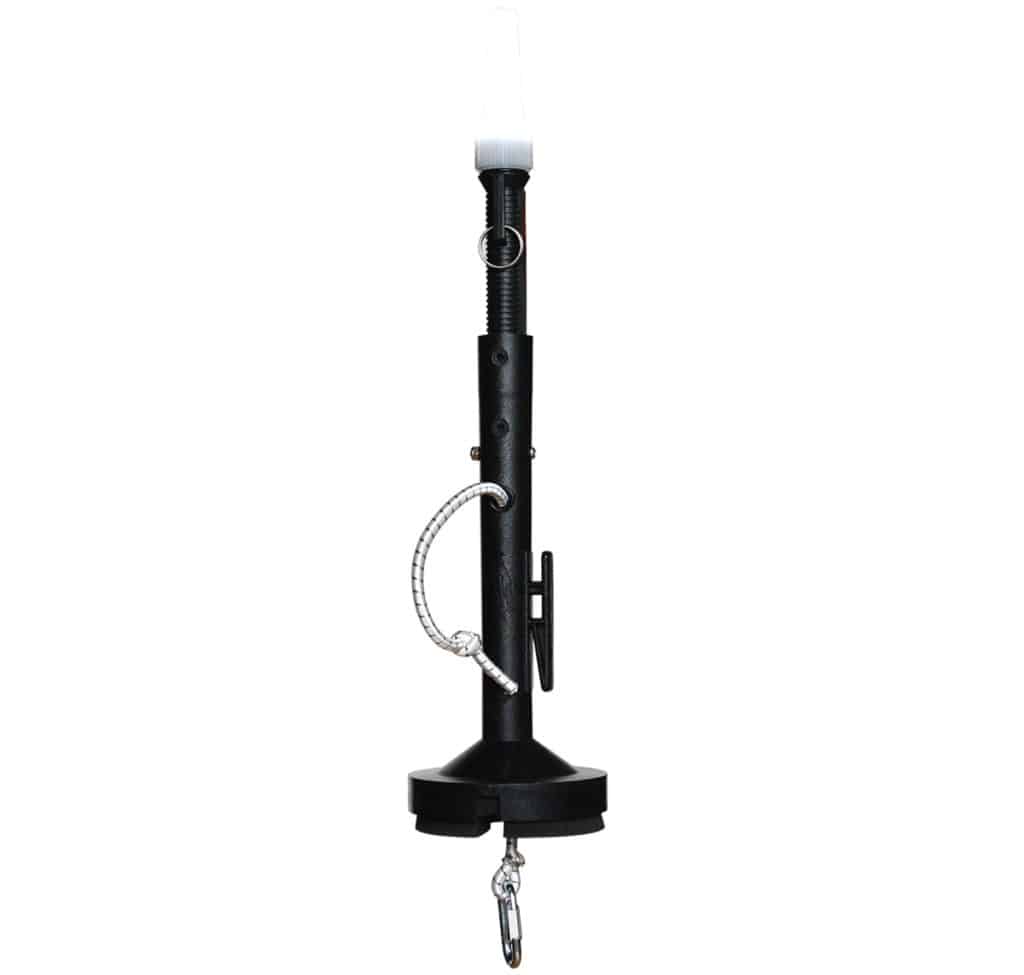
SUP Safety
The popularity of paddleboarding is skyrocketing, says Tim Wilhelm, owner of Manta Racks, which offers stowage systems for SUPs. “My business has doubled in the last year,” he points out as evidence of the trend.
Unfortunately, this rising tide has also led to an increase in incidents involving paddlecraft. While recreational boating accidents and fatalities steadily declined from 2012 to 2015, last year saw a spike in fatalities, says Capt. F. Thomas Boross, chief director of the U.S. Coast Guard Auxiliary.
“During July and August 2016, the United States had the highest number of fatalities in five years, most of which were attributed to paddlecraft accidents,” Boross said in a speech to auxiliary members in St. Louis, Missouri, in January.
With this in mind, the Coast Guard has expanded its Vessel Safety Check (VSC) program to include canoes, kayaks and SUPs, says Harry Jacobs, 37-year member of the U.S. Coast Guard Auxiliary, and an approved vessel examiner and immediate past national director of public affairs for the auxiliary. Jacobs currently serves with the District II Public Affairs Detachment in Southern California.
“We need to bring paddlecraft enthusiasts into the boater-education community,” Jacobs says. Examiners are now conducting VSCs for paddlecraft and issuing decals for canoes, kayaks and SUPs meeting requirements that include a sound-making device, life jacket, white navigation light, visual distress signals and more.

